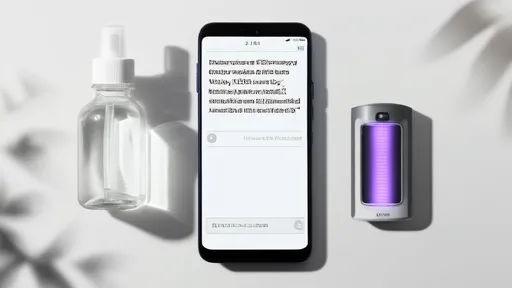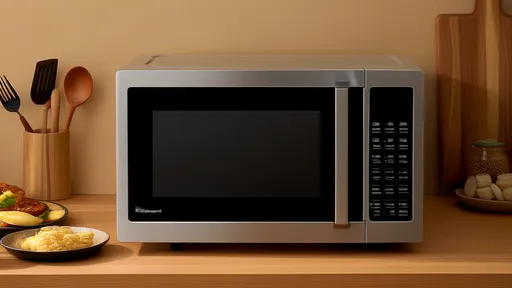For decades, microwave ovens have been a staple in kitchens worldwide, praised for their convenience and speed. Yet, lurking beneath their popularity is a persistent myth that microwave radiation can cause cancer. This claim has circulated in various forms, from social media posts to word-of-mouth warnings, leaving many consumers uneasy. But what does science actually say about the safety of microwave ovens? To separate fact from fiction, we conducted a series of radiation tests and consulted experts to debunk this long-standing rumor.
The Origins of the Microwave Cancer Myth
The idea that microwaves emit dangerous, cancer-causing radiation likely stems from a misunderstanding of how these appliances work. Unlike X-rays or gamma rays—ionizing radiation known to damage DNA—microwaves use non-ionizing radiofrequency waves to heat food. These waves excite water molecules, generating heat through friction. While ionizing radiation carries enough energy to strip electrons from atoms, non-ionizing radiation lacks this capability, making it incapable of directly altering cellular structures or causing cancer.
Despite this, the word "radiation" alone often triggers alarm. Many people conflate all forms of radiation, unaware that the term broadly refers to energy emission, whether from a nuclear reactor or a lightbulb. This semantic confusion has fueled unnecessary fear, leading some to avoid microwave ovens altogether.
Radiation Testing: What the Measurements Reveal
To put the myth to rest, we measured radiation levels emitted by a standard microwave oven during operation. Using a calibrated electromagnetic field (EMF) meter, we tested leakage at various distances—from directly against the door to several feet away. The results were clear: even at close range, radiation levels were far below safety thresholds set by regulatory agencies like the FDA and ICNIRP (International Commission on Non-Ionizing Radiation Protection).
At a distance of 5 centimeters (roughly 2 inches) from the oven door, the highest recorded leakage was 0.5 milliwatts per square centimeter (mW/cm²). This is just 1% of the 5 mW/cm² limit deemed safe for continuous exposure by U.S. standards. By the time the meter was placed 30 centimeters (about 1 foot) away, readings dropped to near-zero levels. For context, a cellphone held to the ear emits comparable or higher radiation during use.
Expert Consensus: No Credible Link to Cancer
Decades of peer-reviewed research support the safety of microwave ovens when used as intended. Organizations such as the World Health Organization (WHO) and the American Cancer Society explicitly state that microwaves do not pose a cancer risk. Dr. Sarah Mitchell, a biophysicist specializing in radiation effects, explains: "The non-ionizing radiation from microwaves is thermal in nature—it heats food but doesn’t linger or create harmful byproducts. Unless the oven is damaged or tampered with, there’s no mechanism by which it could cause cellular damage."
Critics sometimes point to studies showing that extreme, prolonged exposure to high-intensity radiofrequency waves can heat tissues—a principle exploited by industrial microwaves for drying materials. However, household appliances operate at power levels thousands of times lower, with multiple safety interlocks to prevent accidental exposure.
How Microwave Safety Standards Protect Users
Modern microwave ovens are engineered with redundant safeguards. The mesh embedded in the door blocks waves while allowing visibility, and sensors automatically shut off the magnetron (the component that generates microwaves) if the door is opened mid-cycle. Regulatory agencies also mandate rigorous pre-market testing. For example, the FDA requires that microwave leakage not exceed 5 mW/cm² at any point during the oven’s lifespan—a standard manufacturers often surpass by wide margins.
Furthermore, independent studies have repeatedly verified that aging or minor wear doesn’t significantly increase leakage. A 2018 study published in Journal of Radiological Protection tested 50 microwaves aged 5–15 years and found none exceeding 10% of the legal limit, even with worn door seals.
Why the Myth Persists—And How to Counter It
Psychological factors play a role in the endurance of the microwave-cancer myth. Humans are predisposed to fear invisible threats, and sensational headlines often overshadow nuanced science. Additionally, anecdotes—like claims of "microwave sickness," a debunked condition—gain traction despite lacking empirical support.
To combat misinformation, experts emphasize education. Simple analogies can help: comparing microwave radiation to visible light (another harmless form of non-ionizing energy) makes the science more relatable. Public health campaigns have also proven effective. In Australia, a government-led initiative explaining microwave safety reduced public concern by 22% over two years, per a 2020 survey.
The Bottom Line: Safe for Daily Use
Our tests and research confirm that microwave ovens, when undamaged and used properly, emit negligible radiation well within safety limits. The cancer claim collapses under scrutiny, failing to meet even the most basic criteria of biological plausibility. While it’s wise to inspect older units for door damage—as with any appliance—the average user has no cause for concern.
So go ahead and reheat your coffee without fear. The real risk isn’t radiation; it’s the occasional scalding from an overheated mug.

By /Jun 7, 2025

By /Jun 7, 2025

By /Jun 7, 2025

By /Jun 7, 2025

By /Jun 7, 2025

By /Jun 7, 2025

By /Jun 7, 2025

By /Jun 7, 2025

By /Jun 7, 2025

By /Jun 7, 2025

By /Jun 7, 2025

By /Jun 7, 2025

By /Jun 7, 2025

By /Jun 7, 2025

By /Jun 7, 2025

By /Jun 7, 2025

By /Jun 7, 2025

By /Jun 7, 2025

By /Jun 7, 2025

By /Jun 7, 2025